In 2021, desperate for a break during the gloomy COVID years, we took a short weekend holiday to B.R. Hills. On the drive there, I looked for podcasts on this area, and we listened to one about the infamous bandit Veerappan who once terrorized this region and how he was caught. If you haven’t watched the Netflix documentary The Hunt for Veerappan, find a way to watch it. It is more than just a story about catching the outlaw. It was insight into life that may be alien to most urban educated, puritanical middle-class Indians who can afford a Netflix subscription (like me 🙂 ).
B.R. Hills and The Soligas
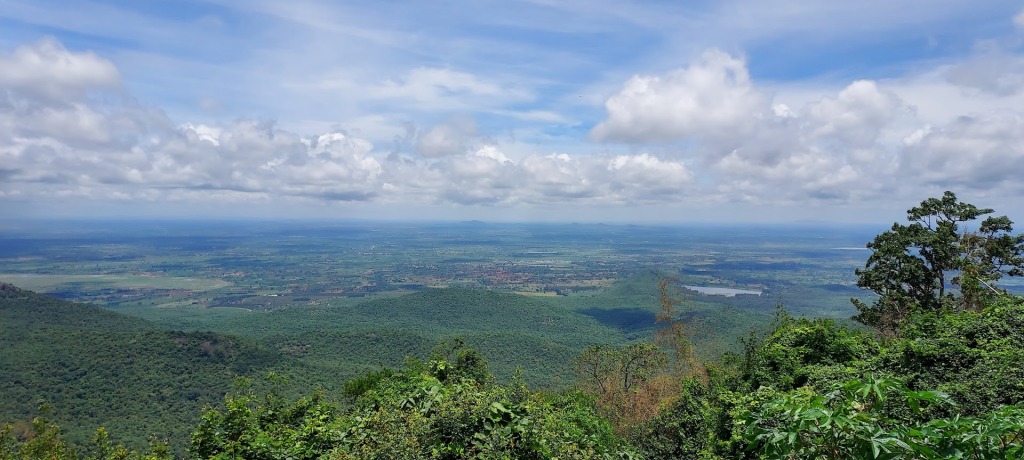
Anyway, let’s return to B.R. Hills. For the three days we were there, we would spend most of our time walking through heavily wooded lanes, past loose and creaky gates that pretended to protect the dilapidated houses within. The place was fairy-tale beautiful with fruit trees in every yard loaded with fruits or flowers, and an aggressive sort of greenery that had no respect for cement and steel. Saplings grew out of brick walls, creepers crept up lamp posts and bars of the gate, and enormous wild boars nonchalantly cut you off on your way to the dining hall, like a Bangalore Swiggy driver. And yet, it was startlingly poor. Children stood by the roadside in clothes a little too short and a little too light for the nippy morning breeze, selling produce from, presumably, their yards or from the outskirts of the forest reserve. They cheerfully tried convincing me that I needed more than one grapefruit when I needed none. (When we came home and cut it open, it was more rind than fruit, and what little fruit there was was terribly bitter and fibrous). On our walks home in the evening, we would hear loud and clearly inebriated voices from behind hedges and walls – male and female – sometimes singing loudly and sometimes fighting with another drunken voice.
Our resort informed us that this was the land of the Soligas, an aboriginal tribe whose deep connection with the forest has shaped their culture, traditions, and livelihood for centuries. We were shown a documentary with our evening tea and pakodas, and later in the evening, were treated to a lively dance performance. It was beautiful, certainly, yet uncomfortable. There was this perfomative aspect to what was supposed to have been a spontaneous expression of joy and celebration. When it was over, young children and beaming couples stood with them for photos as they would with Disney characters at Disneyland.
The economy here runs on the same intrusive tourism that seems to threaten the Soliga’s fragile ecosystem – the forest has long been their home and source of livelihood. The visit to B.R. Hills reminded me that India’s diversity meant that there is no singular experience of what India is to any one. Living in urban India, I was cut off from this other India in which survival was frought with a whole other set of challenges that most urban Indians do not realise exist.
Verrier Elwin: A Controversial Figure in Tribal Rights Advocacy
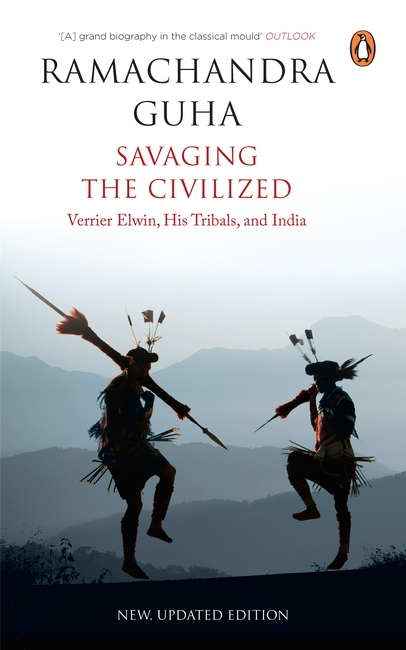
This year, I remembered the Soligas when I was reading Ramachandra Guha’s Savaging the Civilized: Verrier Elwin, His Tribals and India – a biography of Verrier Elwin, the noted anthropologist and tribal rights activist who spent a significant part of his life studying and living among the indigenous peoples of India. I had never heard of Verrier Elwin till I read Guha’s book having missed the Assam CM’s little tweet in the middle of last year where he said “Pandit Nehru appointed European born, Mr. Verrier Elwin to advise the Government on North Eastern affairs. Cong’s blunders began from there.” (Ramachandra Guha, the resident expert on Elwin quickly came to his subject’s defense – you can read that here). The fact that the Assam CM dug so deep to find someone to blame for the crisis in Manipur, tells me that Elwin must have mattered just enough to not be forgotten altogether.
The honorable Chief Minister was not wrong about Elwin being European. Elwin, trained in theology and ordained as a priest in the Church of England, came to India as a missionary and joined Christa Seva Sangha (CSS) in Poona. In the first few years that he was here, he had attended an event at Sabarmati ashram where Gandhi urged the various religious leaders participating to encourage the people they preach to to be better Hindus, better Muslims, and better Christians rather than seek to convert them. Gandhi’s inspiring talk seemed to strike a chord with Elwin, who seems to have had an all-or-nothing attitude to everything he picked up. Determined to dedicate his life to service, he first threw himself into working for the CSS, then threw himself to support the Congress and Gandhi as they struggled for independence, and then quite by accident, discovered the cause of the tribal people and threw himself into their world. Elwin’s passionate and do-first-think-later kind of attitude seemed to extend to all aspects of life – professional and personal. They are not the qualities of an ascetic spiritual man who is supposed to keep a check on all his passions.
And so, quite naturally, Elwin shed the heavy, restrictive cloaks of Christianity and Gandhianism very early in his stay among the Gond’s of Madhya Pradesh.
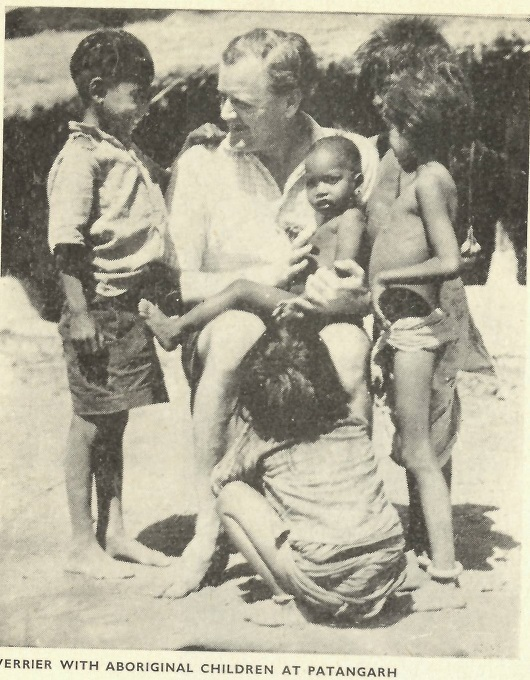
Elwin is a deserving subject of Guha’s literary talent and research skills. It is a pity that aside from the academic, most lay people no longer remember him. But, the fact we have forgotten him probably indicates how little the issues of the tribes affect urban Indians. Afterall, Elwin will be eternally associated with India’s tribal people.
Verrier Elwin’s Ideas on Tribal Rights
One of the early things that struck me as I was reading about Elwin was, how come Gandhi or other Indians feel the kind of great concern that Elwin felt for Indian adivasis? Afterall, aside from the “Depressed Classes” as the Dalits were once called, the adivasis had suffered the greatest neglect, ostracism and injustice in Indian society. Had the adivasis been off everyone’s radar for too long?
According to modern historian and anthropologist James C Scott, author of The Art of Not Being Governed, suggests that the tribals of Southeast Asia and India chose to live outside of the ]civilizing forces of the state (as opposed to simply being neglected). They did not want to be subjects in a kingdom where kings would force them to pay taxes, participate in forced labour or be conscribed in wars. Using geographical barriers like impenetrable forests and tall mountains to their advantage, the Indian tribals kept Hindu, Muslim and English civilizations at bay.
From Guha’s book, I inferred that the Indian tribals suffered the most under colonial administrations. The British had been scientific in their exploitation of the Indian subcontinent. In Guha’s words: “British economic policies, favoring individual titles to property and creating a market for land, dispossessed thousands of tribal families and placed many others in a position of bondage to moneylenders. Forest and game laws reduced the access to aboriginal to the fruits of nature, and in some instances, as for example where shifting cultivation was banned, deprived them of their livelihood altogether. The suppression of the home distillery, forcing the tribal to buy liquor only from outlets licensed by the state, had brought him into contact with ‘the most degraded type of alien’, the liquor contractor. The Indian Penal Code and the Indian Forest Act formed two pillars of a massive… system of jurisprudence which ran counter to tribal custom, subjecting them to endless harassment at the hands of lawyers, lawyers’ touts and ill-informed judges.”
While reading this, it was easy for me to conveniently hold only the British responsible for the miseries of the Indian tribal, but the moneylender, the petty officials, the police that was often sent to harass, the liquor contractors, and the lawyers and their touts were most likely all Indian.
The result was that the tribals, now no longer successfully able to hold civilization at bay, had to yield to it and in yielding lost its forest, its culture and its economies. In his book The Agaria, Elwin writes of the Agaria tribe of iron smelters. The Agaria’s ancient craft was dying a painful death at the hands of modern capitalism. Factory made iron, brought to the market by the railways, pushed the Agaria furnaces out of business. If an Agaria was able to scrape together an income of a paltry thirty rupees per year, eight rupees of it were taken as taxes. New forest laws forbade them from taking wood from the forests to fuel their furnaces and kitchen fires, and with no access to education their children had no chance of making a decent living in the new world they were forced to engage with. The death of their furnaces led to the disappearance of their god of iron – Lohasur, vanquished, as he was by factories and Forest Acts.
In the book, Guha includes an excerpt of one of Elwins’ speeches at the Rotary Club where he reminds people of what being poor really means. He talks of a family whose net worth is a mere four rupees – the price of the then-best-seller – Brave New World. Their hut had burned down and all they needed was four rupees to build themselves a new shelter, but they did not have it and so were in tears.
He tells of a Maria (that’s the name of another tribe) in the princely state of Bastar who was condemned to death. On the eve of his execution he was allowed to eat anything he wanted. He asked for chapatis and fish curry made in the city style. After eating a portion of the humble meal, he asked the jailor to pass the left overs to his little son who was waiting at the gate. His son had never tasted such a delicacy before.
In his speech he said “Poverty is to stand for hours before the gate of the court of justice and to be refused admission. It is to find officialdom deaf and the great-and-wealthy blind.”
In theory, the Indian state tried to protect tribal rights through its constitution. Articles 330, 332, 335, and 342. Special provisions under Articles 330, 332, 335, and 342, among others, reserve seats in Parliament and state legislatures, mandate job reservations, and empower the President to declare tribal areas, facilitating the formulation of laws and regulations tailored to adivasi needs.
This seems to be only on paper though, as adivasi activists eloquently demonstrate.
Guha’s book opened my eyes to the complexity of the issues that affect adivasi communities all over. Elwin advocated for the importance of preserving tribal autonomy, protecting their land rights, and fostering their culture and traditions. He argued against imposing external values and development models on tribal communities, suggesting instead that development should be based on the needs and aspirations of the adivasis themselves.
But again, this is something that sounds good on paper but seldom works in practice.
Personal Reflections: The Moral Ambiguities of Verrier Elwin
About half way through the his biography, I found that my attitude had shifted from admiration to cringe. Somewhere in the middle of his life, Verrier Elwin had gone from being a freshly minted coin to a grimey, sticky one. He felt increasingly like a paternalistic figure, imposing his romanticized notions of tribal purity and simplicity onto communities that were grappling with complexities of change and modernization.
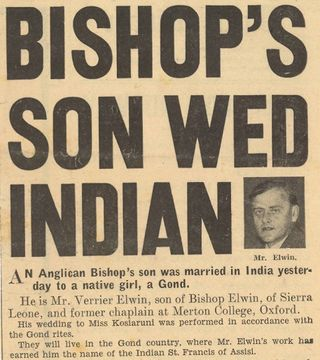
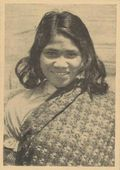
This was particularly evident in his treatment of his wives – first Kosi, a young and feisty Gond woman. Elwin was careful not to reveal too much of his first marriage in journals and letters, but from what Guha could make out, the marriage fell apart because Kosi could not be constrained by the urban definitions of marriage. Elwin indulged in alcohol and affairs beyond his marriage, because he conveniently adopted aspects of so-called Gond open-mindedness and values. The marriage failed because in the end, alcohol and extramarital affairs do not make for good marriages. Kosi was perhaps too free, too unmanageable. She could not have the cultural autonomy he recommended to governments.
He also tried to shape his son into a civilized person by sending him to a boarding school in Mumbai and fretted over his lack of interest, which again seemed to contradict his so-called philosophy.
Later, he lived with the woman who would later be his second wife. He had two children with her out of wedlock and was willing to cast her aside when he came across a young American scholar in Calcutta who was a fan of Elwyn’s work. After a few brief interactions, a fifty-something Elwyn proposed marriage to the smart and modern American academic. She, of course, immediately turned him down. And so, having no one else on the horizon to rescue him from loneliness, he married the tribal woman who had been demure, caring and altogether submissive, as she waited for years for him to take her seriously.
Guha is more generous towards him of course. He insists that Elwyn loved Kosi, although I am not sure how Guha can be so certain. Elwin was, in the end, an ordinary man of his time. After reading about his marriages and personal life, I could not decide how to judge the value of someone’s work. Should I judge it at face value – because at face value, Elwin’s contributions to anthropology are staggering. But if we allow our judgments to be coloured by our knowledge of his actions in his personal life, then all his contributions seem to be coloured with a condescension and an unhealthy obsession with the exotic.
In the end, as most people are, Elwin is a complicated man. He is not, of course, responsible in any way for the violence that has rocked Manipur in the last year. By telling us of his European origins, the Chief Minister Biswas must have hoped to irritate the nationalist, who is not wrong to think that many problems India faces today were caused by the interfering British. Except, when Elwin was in the northeast, advising the NEFA (Arunachal Pradesh) government – not the Manipuri one – he had been an Indian citizen, not British. The tweet might also have been part of a broader narrative by others who claim that Elwin’s influence led to the spread of Christianity in the Northeast (the violence in Manipur is between the majority Meimei (mostly Hindu) and minority Kuki (mostly Christian). But Elwin was not a Christian. In fact he was fiercely against Hindu or Christian missionaries trying to convert adivasis into these mainstream religion. The Manipuri violence is not a communal conflict on the grounds of just religion alone, but on other complex issues – land rights, political power, tribal status, ethnicity and a dash of religion to spice things up.
Well written biographies like Ramachandra Guha’s biography on Verrier Elwin leave the reader with all kinds of take-aways. Some are on themes of history, economics and sociology. You feel smarter. Yay!
What I like is that good biographies force reflection. Every time I would put the book away, it would have me examine aspects of my daily life that I had not really considered earlier. I had to acknowledge that I was guilty of occasionally romanticizing poverty and struggle, much as Elwin did – it is always romantic in theory but never in practice. I had been annoyed that Elwin was making such an effort to give his eldest son a fancy education, but on reflection, if there was a vaccination against poverty and misery, I would claw myself to the front of that line, dragging my son in tow. The life of a struggling entrepreneur, artist, scientist, social worker or anything is wonderful in a biography but not for one’s own child. Verrier and I would have to battle it out.
When it came to marriages, it occurred to me that there was much to learn for a singleton on what not-to-do. First, Elwin must have suffered from some kind of White Knight Syndrome (It is an actual thing!). He thought he was Kosi’s white knight and then realized she was a whole cavalry on her own.
His second marriage was based on fear – “Oh no, I am an old man and no one wants me”. Not a great reason to marry but probably the reason why most people stick it out.
Again, I am convinced that no one is altogether wonderful. In his youth, his idealism, fearlessness and willingness to embrace poverty, physical, mental and emotional discomfort and committment to service were (and continue to be) admirable. His transition away from Gandhianism and Christianity are natural and understandable parts of his journey, and remind me that one should always be ready to outgrow ideas and philosophies.
Even in the smudgy grey second half of his life, he remains admirable for his commitment to the cause of the adivasi. Better someone than no one. Paternalistic though he maybe, he consistently meant the best for the communities he tried to represent to the outer world. There must be special points for effort and intent. Plus, he may be many things, but he was never boring.
Other resources I found interesting:
- This provocatively titled blog on the British Library website called Can an Englishman become truly Indian?
- Ramachandra Guha plugging his book in this article about how the book was 25 years in the making.
- About the Soligas
- On James C Scott’s idea of Zomia – this anarchical hilly zone that extends from India to Taiwan where tribals have gone to take refuge in nature, away from states. His book is heavy but easily summarised in this Wikipedia piece